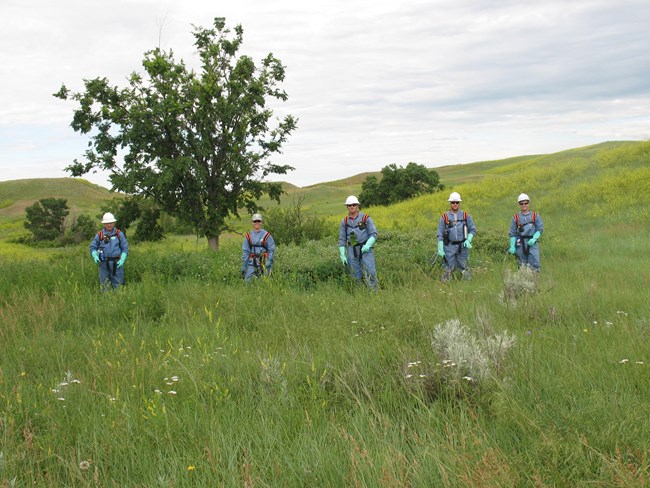National parks are facing new and different challenges today. The spread of invasive species is a major challenge, causing undesirable landscape level change and ecosystem instability in parks. The National Park Service (NPS) is working to manage invasive species in park units through national and local programs, including the Invasive Plant Program.

NPS Photo.
Program Overview
The Invasive Plant Program (IPP) is the NPS lead for invasive terrestrial – or land-dwelling - plant issues, as well as some aquatic and wetland plant species. The IPP provides technical assistance and policy guidance to parks and regions on matters related to invasive species prevention, containment, management, and monitoring.
IPP was developed around the Invasive Plant Management Team (IPMT) Program that was created in 2000. The IPMT Program provides “boots-on-the-ground” invasive plant management assistance and expertise to park units across the country. There are 15 IPMTs across the country, find one in an area near you!
The IPP and IPMT produce an each year summarizing the program’s accomplishments.
Invasive Plant Data Management
The National Invasive Species Information Management Systems (NISIMS) is a geodatabase supported by IPP and adapted from the Bureau of Land Management. NISMS is the NPS standard invasive species data management tool. NPS has adopted and modified this tool as a means to standardize invasive plant data collection and management, and to provide for the reporting of invasive plant management program data at the national, team, and park unit level. Visit the NISIMS database, here.
Meet the IPMTs!
Invasive Plant Management TeamsLast updated: March 23, 2021
